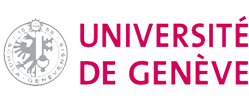Pleading in the 13th Century: Between Theory and Practice
This chapter explores the relationship between legal procedure and rhetoric in medieval law schools. It examines how legal practitioners and students were trained in argumentation, highlighting the interplay between procedural norms and rhetorical techniques. The study focuses on the Ordines iudiciarii, procedural treatises that structured legal argumentation, and analyzes quaestiones, hypothetical legal cases used in academic debates. The chapter also considers the role of rhetorical manuals, particularly Ciceronian traditions, in shaping legal reasoning.
Legal Arguments in Theory
Procedural Treatises
By the 12th century, ecclesiastical courts had begun to develop a more structured procedural system, influenced by Roman law. This was partly in response to the increasing number of appeals to the Roman Curia. However, the Corpus iuris civilis did not contain a coherent procedural system, as its texts were compiled over centuries for different jurisdictions. Similarly, Gratian’s Decretum, despite its attempt to harmonize discordant texts, lacked specific procedural sections.
To address this gap, jurists produced treatises on procedural law, known as Ordines iudiciarii. These texts:
- Defined the sequence of trial stages, from pleadings to final judgment.
- Emphasized the role of procedural exceptions, which were crucial in litigation strategies.
- Aimed to guide legal practitioners rather than merely instruct court officials.
These manuals indicate that medieval law was deeply concerned with procedural correctness, which was seen as a source of legitimacy.
Example: Tancred of Bologna
Tancred of Bologna, an early 13th-century canonist and professor, wrote an influential procedural treatise, the Ordo iudiciarius. His work offers insight into how legal arguments were structured in court.
Structure of Legal Arguments According to Tancred
Tancred outlines the basic sequence of courtroom argumentation:
- The plaintiff must establish the legal foundation of the case.
- The defendant responds, using witness testimony, documents, or legal counterarguments.
- If the defendant raises an exception, they assume the burden of proof.
- The plaintiff may reply, challenging the exception.
- Further exchanges follow, each side presenting additional evidence or rebuttals.
Tancred emphasizes specific areas of legal argumentation, including:
- Jurisdiction of the judge.
- Validity of the written plea (libellus).
- Reliability of witness depositions.
- Legal strength of documentary evidence and presumptions.
These procedural steps ensured consistency in trials, reinforcing the connection between formal legal procedure and the effectiveness of argumentation.
Rhetorical Manuals
Legal education included training in classical rhetoric, particularly in:
- Cicero’s De inventione.
- The Rhetorica ad Herennium (mistakenly attributed to Cicero in the Middle Ages).
By the 12th century, systematic commentaries on these works circulated in France and Italy, influencing legal training.
- The theory of judicial eloquence from De inventione and Ad Herennium guided the structuring of legal pleadings.
- Lawyers learned to present facts persuasively, using rhetorical techniques to frame evidence and testimony.
However, as trials became more proceduralized, the role of rhetoric in law declined. By the early 13th century, argumentation shifted from persuasion to authoritative legal citations, favoring juridical precision over rhetorical flourish.
Legal Arguments in Practice
Example: Two Quaestiones from the Quaestiones Londinenses
The chapter examines two quaestiones, hypothetical legal cases debated in Oxford law schools in the late 12th and early 13th centuries. These debates trained students in legal reasoning, forcing them to argue both sides of a case using Roman and canon law principles.
Quaestio A: The Legate’s Authority and the Rights of a Crusader
This case involves a conflict between papal authority and the protection of a crusader’s lands.
- The dispute arose when papal legates attempted to enter Normandy while King Richard I was away on crusade.
- The seneschal of Normandy refused them entry, arguing that papal interference violated Richard’s privileges as a crusader.
- The papal legate excommunicated the seneschal and placed Normandy under interdict.
The legal debate centers on whether the legate had the authority to impose sanctions or whether Richard’s crusader status exempted his lands from papal jurisdiction.
Quaestio B: The Case of the Warrior Bishop
This case examines the legality of imprisoning a bishop who participated in warfare.
- Philip, Bishop of Beauvais, had fought against Richard I’s forces.
- Richard captured him and imprisoned him, claiming that as a warrior, Philip lost clerical privileges.
- Philip appealed to the Pope, arguing that clergy should be immune from imprisonment.
The argument hinges on whether a cleric who engages in warfare forfeits ecclesiastical protections.
- Canon law prohibited clerics from bearing arms, but exceptions were sometimes made for self-defense or church defense.
- Richard’s defense rested on the idea that Philip’s military actions transformed him into a secular combatant.
These quaestiones illustrate how legal scholars debated complex jurisdictional issues, reinforcing argumentative techniques essential for both court practice and academic discourse.
Conclusion
Sarah White’s chapter highlights how medieval legal argumentation was shaped by both procedural norms and rhetorical training.
- Early legal education emphasized rhetoric, but by the 13th century, legal citations and procedural formality became dominant.
- The Ordines iudiciarii helped standardize courtroom arguments, ensuring structured litigation.
- The quaestiones tradition allowed law students to refine their argumentative skills, applying Roman and canon law principles to hypothetical legal conflicts.
The study ultimately demonstrates that legal argumentation in medieval courts was not only about persuasion but about mastering procedural logic and authoritative references.







